#1578-1630
Text
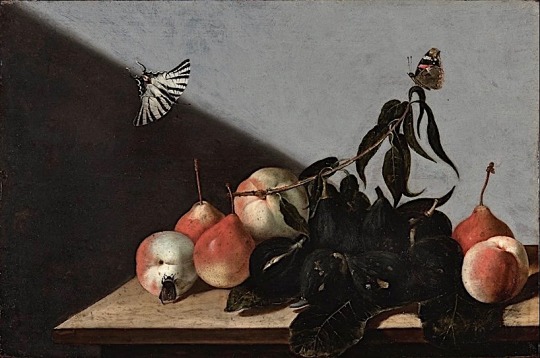
Fede Galizia Still Life with apples, pears, figs and butterflies
24 notes
·
View notes
Text



Judith and Holofernes by women painters:
Fede Galizia (Italian, 1578-1630)
Artemisia Gentileschi (Italian, 1593-c. 1656)
Circle of Elisabetta Sirani (Italian, 1638-1665)
See more here
#women painters#women artists#early women painters#early women artists#artemisia gentileschi#fede galizia#elisabetta sirani#judith and holofernes#religious art#italian painters#seventeenth century#art#painting
392 notes
·
View notes
Photo

Ottavio Mario Leoni (Italian, 1578–1630) - Self portrait
8 notes
·
View notes
Text
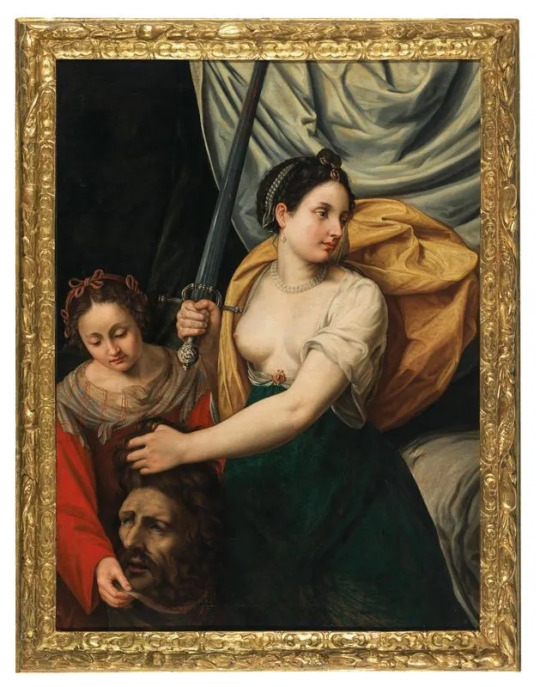

Fede Galizia (Milan 1578–1630), Judith with the head of Holofernes, signed in red,
on the seam of the sack lower left: FEDE GALITIA, oil on canvas.
Courtesy Alain Truong
11 notes
·
View notes
Text

Fede Galizia, Judith with the head of Holofernes
art detail (1578–1630)
3 notes
·
View notes
Text
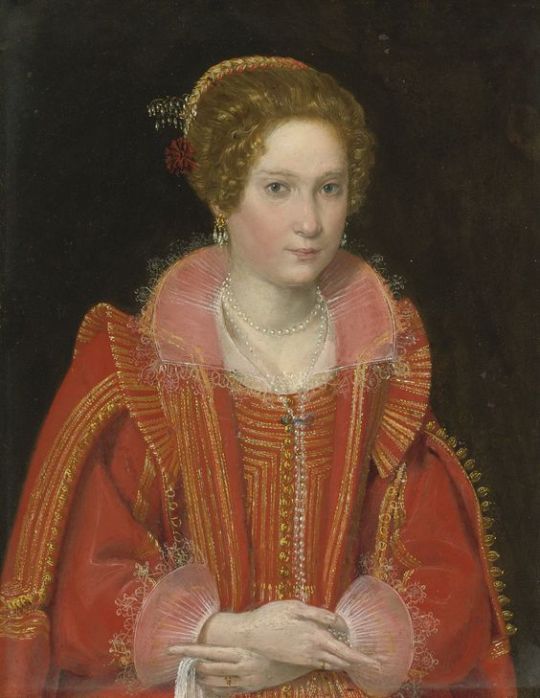
Portrait of a lady
Ottavio Leoni (1578-1630, Italian)
#dianthus#carnation#portrait#women portrait#17th century painting#17th century art#painting#italian art#Ottavio Leoni
9 notes
·
View notes
Text

Fede Galizia (Milan, 1578 - 1630), Dish with pears and peaches, oil on canvas, 28.5 x 39.5 cm, © Galerie Canesso Paris
#still life#art#painting#fede galizia#fine art#art of the still life blog#fruit still life#woman painter#italian artist
3 notes
·
View notes
Text
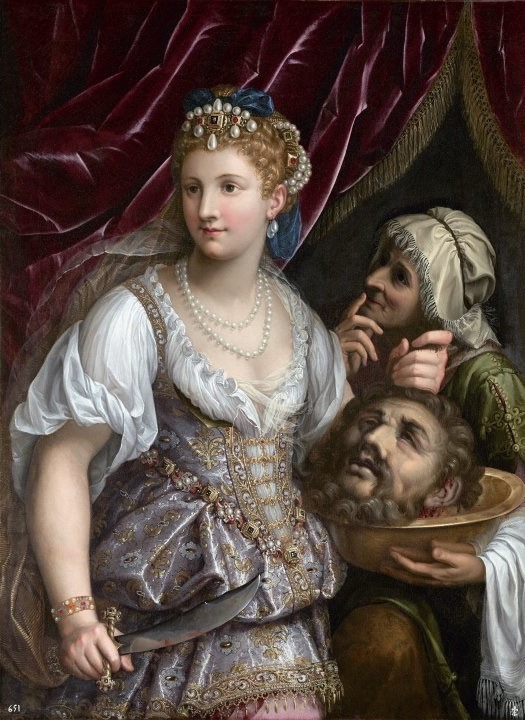
Fede Galizia, Judith* with the Head of Holofernes (1596). © Palacio Real de La Granja de San Ildefonso, Segovia, Patrimonio Nacional, Madrid | Photo: Mick Vincenz
The figure of Judith is believed to be a self-portrait., 1601-10
Fede Galizia, better known as Galizia, (c. 1578 – c. 1630) was an Italian painter of still-lifes, portraits, and religious pictures. She is especially noted as a painter of still-lifes of fruit, a genre in which she was one of the earliest practitioners in European art. She is perhaps not as well known as other female artists, such as Angelica Kauffman and Élisabeth Vigée Le Brun, because she did not have access to court-oriented or aristocratic social circles, nor had she sought the particular patronage of political rulers and noblemen. Via Wikipedia
#FedeGalizia #Galizia #artherstory #artbywomen #womensart #palianshow #art #womenartists #femaleartist #artist
1 note
·
View note
Text







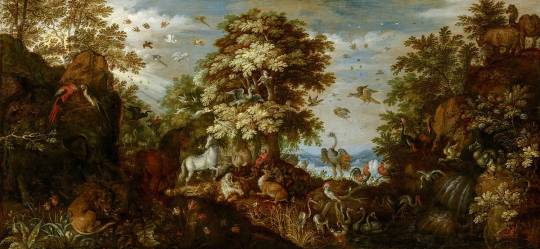
Wat? Berglandschap met waterval (1606-1607), Zittende bedelaar en een studie van een mannenhoofd (1608-1609), Joodse gelovigen in de synagoge (1606-1607), Drie Hongaarse ruiters (1604-1608), Groot bloemstuk met keizerskroon (1624), Twee kikkers in het gras (1608-1610),De dodo (ca. 1630) en Orpheus betovert de dieren met zijn muziek (1619) door Roelant Savery
Waar? Tentoonstelling Roelant Savery’s wonderlijke wereld in Het Mauritshuis, Den Haag
Wanneer? 14 fabruari 2024
Roelant Savery (1578-1639) werd geboren in Kortrijk. Zijn protestantse familie ontvluchtte de Spaanse bezetting en week uit naar de Noordelijke Nederlanden. Daar werd hij door zijn oudere broer Jacob opgeleid tot schilder. Na zijn opleiding reisde Roelant naar Praag, waar hij benoemd werd tot hofschilder van Rudolf II, keizer van het Heilige Roomse Rijk. De keizer hield er een uitgebreide verzameling kunst en natuurvoorwerpen op na, evenals tal van levende planten en dieren. Savery trok in opdracht van de keizer het rijk in om bijzondere landschappen in beeld te brengen. Zijn schetsen van berg- en boslandschappen dienden later als basis voor zijn schilderijen.
De kunstenaar beperkte zich niet tot het vastleggen van landschappen. Hij had ook grote belangstelling voor de mensen die hij tegenkwam. Hij tekende onder meer boeren, bedelaars, joden in de synagoge en ruiters. Vaak schilderde hij mensen van opzij of op de rug, wat suggereert dat hij ze vastlegde zonder dat ze het merkten. Als geheugensteuntje maakte hij notities bij de schetsen, met name over de kleding. .
Als een van de eersten schilderde Savery bloemstillevens. Hij zou dat zij hele leven blijven doen. In de tuinen van keizer Rudolf II kon de kunstenaar zeldzame planten van over de hele wereld bestuderen. Hij schilderde elke afzonderlijke bloem zeer natuurgetrouw na. Zijn meest indrukwekkende bloemstilleven schilderde Savery in 1624. Het werk bevat maar liefst 63 bloemsoorten, variërend van dure exotische tot wilde. Bovenin het boeket prijkt een oranjerode keizerskroon (corona imperalis), vernoemd naar zijn inmiddels voormalige werkgever: keizer Rudolf II. Naast de vele bloemen bevat het schilderij ook 45 diersoorten, waaronder een kaketoe die een kikker te pakken heeft. Hoe indrukwekkend dit grootse bloemstilleven ook is, ik ben minstens zo geboeid door een kleine voorstudie voor dit werk: Twee kikkers in het gras. Savery maakte deze voorstudie jaren eerder dan het schilderij, waarschijnlijk toen hij nog in Praag woonde.
Minstens zo interessant als de bloemstillevens zijn Savery’s voorstellingen van dieren. Hij schilderde onder andere veel vogels, waaronder de uitgestorven dodo van Mauritius. De vogel is nogal aan de dikke kant, wat waarschijnlijk te verklaren is uit het feit dat de schilder een opgezet exemplaar uit de keizerlijke collectie als voorbeeld gebruikte. Bij het opzetten van het dier was te veel vulsel gebruikt. Het bekendste type diervoorstellingen waarin Savery zich specialiseerde is het overvolle dierlandschap, waarin zich vaak een Bijbelse of mythologische scène afspeelt. Op deze tentoonstelling hangt als voorbeeld daarvan Orpheus betovert de dieren met zijn muziek. Tussen de vele dieren is het even zoeken, maar midden op het doek, onder een boom zit Orpheus te spelen. Ook in dit schilderij maakt de ietwat obese dodo zijn opwachting. De vogel zit rechtsonder op het schilderij op een rotsblok.
In 1615, een paar jaar na het overlijden van keizer Rudolf II, keerde Roelant Savery terug naar Nederland en vestigde zich uiteindelijk in Utrecht. Zijn huis aan de Boterstraat noemde hij Het Keyzerswapen, een verwijzing naar zijn status als hofschilder.
Zoals altijd het geval is bij exposities in het Mauritshuis, is het aantal werken beperkt. Het museum beschikt nu eenmaal niet over een grote tentoonstellingsruimte. Toch geeft Roelant Savery’s wonderlijke wereld een goed beeld van de veelzijdigheid van deze kunstenaar. Hij was een echte alleskunner in de kunst.
0 notes
Text
Analysis of "Judith with the Head of Holofernes" by Fede Galizia
Fede Galizia was an Italian artist who lived from 1578-1630. Her art mainly consisted of still-lifes, religious imagery and portraits. Her use of religious imagery is used in her work titled “Judith with the Head of Holofernes” (1596). In this painting we see the artists interpretation of the biblical story of Judith who saved her city by seducing and assassinating the Assyrian general Holofernes. The artwork is an oil painting on canvas. The artist emphasizes contrast with light and shadow and textures with judiths dress and the drape. The artwork is associated with the mannerism movement which happened during the late renaissance period. The paintings focus is on Judith with which the artist illuminated to draw attention to her and emphasize her powerful stance. The dark shadows that surround her create a dramatic scene which intensifies the painting. The shadows also create contrast with the bright light of Judith. The drape in the background creates depth and the deep crimson color adds to the dark setting. Looking at Judith herself, her stance is powerful, and her face has a strong gaze with a smirk which portrays her feeling triumphant. Looking at the head of Holofernes, we can see that Judith is prominently displaying it in her hand. Combined with its soulless face and blood still dripping, this adds to the overall darkness and expresses the brutality of the event. I feel the message that Galizia was trying to convey with this interpretation, is female empowerment and heroism. The painting captures Judith in her moment of victory with expressions of strength and courage after saving her city from the threats of Holofernes and taking matters into her own hands. This artwork is important to society not only for the religious cultural significance but also with the message it portrays about female empowerment and symbolism. During the time, Galizia was part of a small minority of female artists Her recognition and achievements, especially with this piece, helped pave the way for female artists. This artwork can inspire people, mainly females, by giving them a role model of courage and strength. When I visited the Ringling Art Museum, I was debating between researching this piece or Francesco Albani’s piece named “Saint John the Baptist in the Wilderness”. I ultimately picked this piece because I love viewing the small fraction of historical art made by women. I also liked how Galizia conveyed her message through the use of dark scenery and the representation of a powerful female as the main center piece.
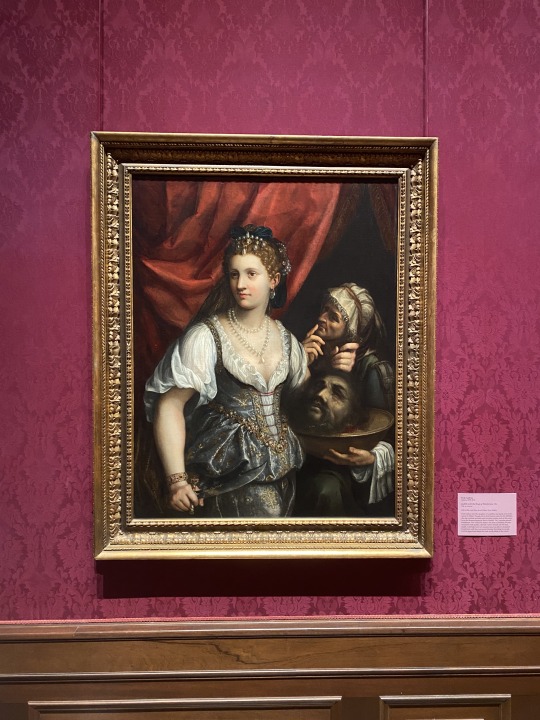
0 notes
Photo

Fede Galizia (Italian, 1578-1630): Judith with the head of Holofernes (via Dorotheum)
#Fede Galizia#women artists#women painters#art#painting#religious art#early women artists#early women painters#italian painters#sixteenth century#seventeenth century
296 notes
·
View notes
Text
Susanna and the Elders, ca. 1620
Ottavio Leoni, Italian, 1578-1630
Oil on copper
Unframed: 18 1/16 × 14 3/16 inches (45.9 × 36 cm)
13 3/4 × 18 × 2 inches (34.9 × 45.7 × 5.1 cm)
Founders Society Purchase, William H. Murphy Fund
Provenance
collection of Winthrop Astor Chanler (Newport, Rhode Island, USA)
(A. F. Mondschein, New York, New York, USA)
1941-present, purchase by the Detroit Institute of Arts (Detroit, Michigan, USA)
edisonmariotti @edisonblog @edisonmariotti
.br
Susana e os Anciãos, ca. 1620
Ottavio Leoni, italiano, 1578-1630
óleo sobre cobre
Sem moldura: 18 1/16 × 14 3/16 polegadas (45,9 × 36 cm)
13 3/4 × 18 × 2 polegadas (34,9 × 45,7 × 5,1 cm)
Compra da Founders Society, William H. Murphy Fund
Proveniência
coleção de Winthrop Astor Chanler (Newport, Rhode Island, EUA)
(A. F. Mondschein, Nova York, Nova York, EUA)
1941-presente, compra pelo Detroit Institute of Arts (Detroit, Michigan, EUA)
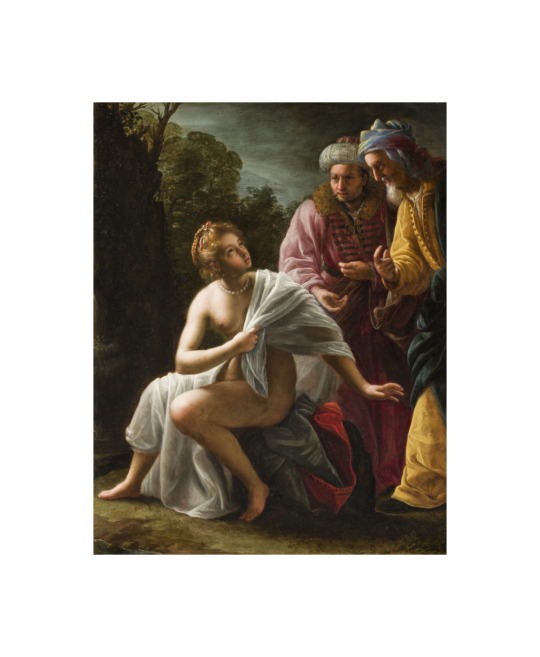
1 note
·
View note
Photo
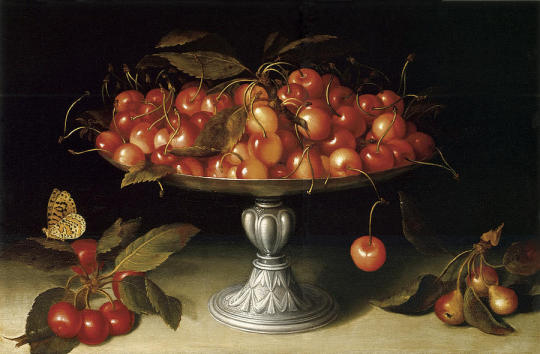
Fede Galizia (1578 - 1630) - Cherries In A Silver Compote With Crabapples
26 notes
·
View notes
Photo

Giuditta con la testa di Oloferne (detail)
by Fede Galizia (Milanese, 1578 - 1630)
oil on panel, c. 1596
Private collection, Milan
#Fede Galizia#Judith#Monarquía Hispánica#Spanish Empire#Duchy of Milan#16th century#1596#Renaissance#Italy#Old Testament#oil on panel#paintresses#biblical#paintings
15K notes
·
View notes
Photo
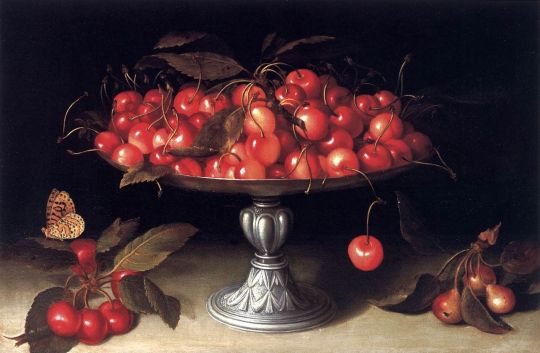
Fede Galizia (Italian,c.1578-c.1630)
Cherries in a silver compote with crabapples
Oil on canvas
254 notes
·
View notes
Photo

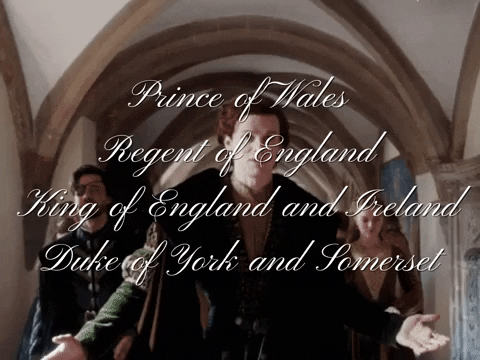
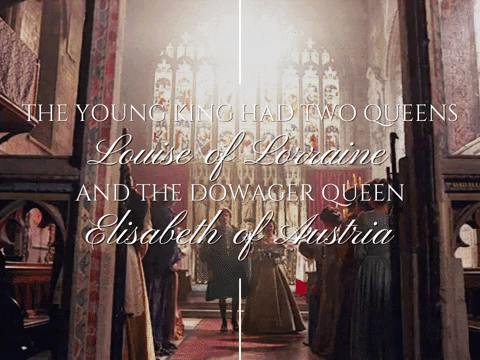

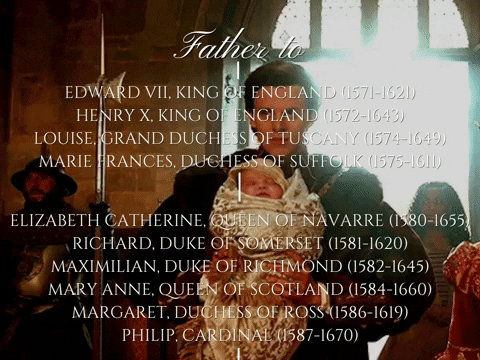
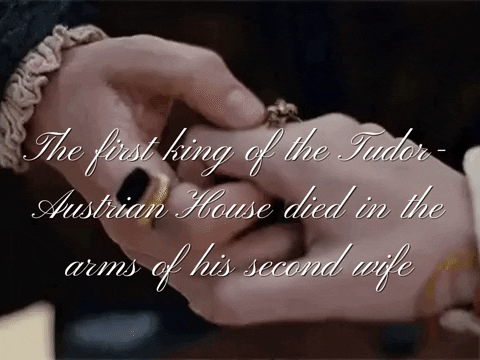
𝙻𝙾𝚂 𝙷𝙸𝙹𝙾𝚂 𝙳𝙴 𝙵𝙴𝙻𝙸𝙿𝙴 𝙸𝙸 𝙳𝙴 𝙴𝚂𝙿𝙰Ñ𝙰- 𝙴𝙽𝚁𝙸𝚀𝚄𝙴 𝙸𝚇 𝙳𝙴 𝙸𝙽𝙶𝙻𝙰𝚃𝙴𝚁𝚁𝙰
Enrique fue el primer hijo de la reina María I de Inglaterra y entonces príncipe de Asturias Felipe de Austria. Su madre contaba con 38 años cuando lo dio a luz, siendo su nacimiento un milagro y una gran alegría para los católicos en Inglaterra.
Sin embargo su nacimiento también causo grandes tensiones entre católicos y protestantes que no querían a un rey católico en el trono, siendo la preferida la medio hermana de su madre, Isabel Tudor que era protestante.
Estas tensiones aumentaron cuando nació un año después su hermana Catalina debido a que ambos hermanos apartaban definitivamente de la linea sucesora a su tía materna.
Pese a estas tensiones y conflictos religiosos, Enrique tuvo una infancia feliz y se mostraba muy cercano a su madre y hermana con la cual compartió una educación basada en leyes, historia, religión y modales.
Su padre Felipe II de España nunca se intereso por el ni por Catalina, es por ello que Enrique nunca mostro interés por el reino de España además de mantener numerosas tensiones con sus medios hermanos.
El príncipe de Gales fue un soplo de aire fresco para su madre María I de Inglaterra y se dice que este calmaba los arranques de ira que tenia su madre, además de que la reina se volvió una mujer mas calmada y su imagen de reina sanguinaria se fue dispersando volviéndose una mujer serena, estricta y que buscaba no anteponer sus sentimientos ante la gobernación.
En 1558 sus padres se divorciaron por acuerdo mutuo y los príncipes adoptaron el apellido Tudor, además de permanecer junto a su progenitora mientras que su padre volvía a España para hacer su propia vida.
Pese al divorcio de sus padres, Enrique y Catalina siguieron siendo vistos como los herederos de la corona inglesa, además de que su vida siguió siendo igual junto a su madre.
En 1569 la reina María I de Inglaterra empezó a tener distintos problemas de salud y permaneció en cama por varios días. Durante su enfermedad la reina temiendo por su final decidió declarar a su hijo como mayor de edad y le dejo a Enrique la tarea de buscar un buen compromiso para su hermana.
María I de Inglaterra falleció ese mismo debido a un supuesto cáncer de ovarios y su muerte fue muy sentida por sus hijos que guardaron un luto de 5 meses por su querida madre.
Enrique fue rápidamente coronado en el Palacio de St James en Londres como Enrique IX de Inglaterra y fue declarado mayor de edad con casi 15 años.
Tras ser coronado una de las primeras decisiones que tomo fue mandar a llamar a su tía, Isabel Tudor y se dice que en aquella reunión la princesa acepto renunciar al trono ingles a cambio de grandes sumas de dinero y de portar el titulo de Duquesa de Leicester.
Tras esta negociación Enrique decidió aceptar la libertad religiosa pese a ser un devoto católico, debido a los numerosos enfrentamientos religiosos en Inglaterra y causados por su subida al trono.
Aquella decisión le trajo algunas tensiones con el papado y reinos como España no aprobaban aquella libertad de culto.
El rey decidió casar a su hermana Catalina con el príncipe Enrique de Navarra, heredero al trono navarro como una forma de entablar buenas relaciones con familias reales y nobles protestantes.
Tras esto favoritos de Enrique buscaran una esposa para el y el opto por una esposa francesa siendo la elegida la hermosa Luisa de Lorena-Vaudémont, hija del Duque de Mercoeur y pariente de los Duques de Lorena.
La pareja se caso en 1570 y se sabe que Enrique apreció mucho a su esposa a la cual llamaba cariñosamente “Isa”.
Los reyes mantuvieron un matrimonio estable y feliz, además de tener 4 hijos en común:
Eduardo VII (1571-1621) Fue rey de Inglaterra entre 1610 a 1621 siendo considerado un rey que no se intereso en la gobernación y prefería estar centrado en su gran biblioteca. No se caso por elección propia y no tuvo hijos.
Falleció a los 50 años de edad y sería sucedido por su hermano Enrique X.
Enrique X (1572-1643) Fue rey de Inglaterra entre 1621 a 1643 al suceder a su hermano mayor. Para esos momentos ya estaba casado con Isabel de Dinamarca y tuvieron 6 hijos: Ana Isabel, Enrique XI, Inés, Victoria, Eduardo y Edmundo.
Su reinado destaco por entablar una corta paz con Roma y en acabar con las guerras de religión. Sin embargo falleció a los 71 años antes de llegar a cumplir este ultimo objetivo.
Luisa (1574-1649) Fue Gran Duquesa consorte de Toscana al casarse con su primo, Felipe I de la Toscana. La pareja tuvo una buena relación y Luisa le dio a su marido 8 hijos: Luisa, Felipe II, Olga, Francisco II, Juana, Virginia, Cosme y Guillermo.
Tras enviudar en 1630 permaneció alejada de la gobernación y falleció a los 75 años.
María Francisca (1575-1611) Fue Duquesa consorte de Suffolk al casarse con su primo Edward Dudley, hijo de Jane Grey y Guilford Dudley. Los duques no tuvieron una buena relación por la arrogancia de María Francisca, pero acabaron teniendo 3 hijos: Edward, Enriqueta y Isabel.
María Francisca falleció un año después que su padre a los 36 años por tuberculosis.
En 1576 falleció la reina Luisa de Lorena-Vaudémont debido a un aborto y su muerte muy dolorosa para Enrique que estableció un luto de 5 meses por su fallecida esposa.
Tras esto Enrique se reunió en 1577 con su hermana la nueva reina de Navarra Catalina en la frontera de Navarra y ahí ambos hermanos tuvieron un emotivo reencuentro, además de entablar algunos acuerdos con el reino de Francia.
El rey apoyo los derechos sucesorios de la joven princesa María Isabel de Valois, hija del rey Carlos IX de Francia y que esta se casase con uno de sus primos paternos para asegurar el linaje de la Casa Valois.
Durante estas negociaciones la reina viuda de Francia, Isabel de Austria volvió a la corte francesa en 1578 tras ser echada por su antigua suegra Catalina de Medici. Enrique quedo encantado por la apariencia de la reina viuda considerándola como una de las mujeres mas hermosas y elegantes de Europa, por su parte Isabel considero al rey ingles como un joven atractivo, inteligente y tranquilo habiendo una gran química entre ellos.
Rápidamente el rey pidió la mano de la archiduquesa al hermano de esta, Rodolfo II de Habsburgo y tras algunas negociaciones que duraron un año, el emperador acepto que su hermana se casase con Enrique.
Enrique IX e Isabel se casaron en 1579 en Moulins durante su estancia en Navarra con unos pocos invitados, entre ellos los reyes de Navarra Enrique III y Catalina Tudor la cual le entrego a su nueva cuñada un collar de diamantes como regalo de bodas.
Isabel se quedo embarazada en su luna de miel, es por ello que Enrique decidió que partirían hacia Inglaterra para que fuese coronada como Reina consorte de Inglaterra.
A principios del 1580 Enrique IX e Isabel llegaron a Inglaterra y pocos meses después se celebro una segunda boda donde Isabel fue coronada como Reina consorte de Inglaterra y esta adopto a los hijos que tuvo Enrique de su primer matrimonio a los cuales crío como sus propios hijos.
Los reyes mantuvieron un matrimonio muy feliz destacando Enrique como un marido fiel, amoroso y coqueto con su segunda esposa.
Isabel le dio a su marido 6 hijos a su marido:
Isabel Catalina (1580-1655) Fue reina consorte de Navarra al casarse con su primo Enrique IV. La pareja fue feliz y tuvieron 4 hijos en común: Isabel María, Juan II, Enriqueta y Antonio.
Ricardo de Somerset (1581-1620) Fue Duque de Somerset ostentando este titulo tras la caída del anterior Duque Edward Seymour. Ricardo se caso con Elizabeth Howard y tuvieron 2 hijas: Margarita Ana y Felipa
Maximiliano de Richmond (1582-1645) Fue Duque de Richmond y regente de su medio hermano Enrique X y del hijo de este Enrique XI de Inglaterra. Se caso con Luisa Juliana del Palatinado y tuvieron 7 hijos: Carolina, Marcela, Maximiliano, María Ana, Ernesto, Sofía y Margarita.
María Ana (1584-1660) Fue reina consorte de Escocia al casarse con el príncipe Enrique Federico Estuardo el futuro Enrique I Federico de Escocia que era casi 10 años mas joven que ella.
Su matrimonio no se consumo hasta 1610 y la pareja tuvo 3 hijos en común: Jacobo VII, Carlos y Barbara.
Margarita (1586-1619) Fue Marquesa de Hamilton y después Duquesa de Ross al casarse con James Hamilton, que se convirtió en el favorito de la reina María I Estuardo. La pareja no fue feliz, aun que llegaron a tener 5 hijos: James, Victoria, Renata, María Margarita y George.
Falleció a los 33 años de edad por la viruela.
Felipe (1587-1670) Fue cardenal y escritor controversial por sus ideas liberales a cerca sobre la religión protestante, la corrupción en Roma y su desacuerdo ante el Papa Paulo V.
Fue el hijo mas longevo del rey, falleciendo a los 83 años de edad.
Enrique IX fue un rey apreciado por una gran parte del pueblo y su reinado destaco por buscar la paz entre la nobleza, el pueblo y otras casas reales. Por ello apoyo a la reina María Estuardo cuando esta se había casado con su tercer marido James Hepburn y tenia muchos frentes abiertos en Escocia. El rey decidió proponerle a su prima lejana la posibilidad de mantener su corona y la custodia de sus hijos si se divorciaba de su marido para contraer un matrimonio ventajoso, algo que la reina acabo por aceptar y se caso con el archiduque de Austria Ernesto de Austria.
También se sabe que acepto que la exiliada reina Jane Grey regresara a Inglaterra y de darle el Ducado de Suffolk que le pertenecía por derecho propio. Aquellos acuerdos de paz exitosos le valieron el apodo del “Pacificador” y se gano el respeto de algunos nobles que en un principio estaban en su contra.
Pese a esto el rey no era un hombre muy confiado y temía ser envenenado en cualquier momento, es por ello que tenia sus cocineros y sirvientes de confianza.
Enrique siempre honro la memoria de su madre y de su abuela materna es por ello que decidió que ambas debían ser enterradas juntas en la Abadía de Westminster donde también decidió enterrar los restos mortales de las esposas que tuvo su fallecido abuelo Enrique VIII pensando que debían de tener un entierro digno por haber sido reinas.
Durante sus últimos años su salud se fue deteriorando y solían practicarle sangrías que lo debilitaron aun mas conforme pasaba el tiempo. Enrique decidió dictar su testamento donde pidió ser enterrado junto a sus familiares en Westminster y llevarse a la tumba los retratos de su esposa e hijos, también le heredo a cada uno de sus hijos y a su segunda esposa una cuantiosa herencia.
Enrique IX de Inglaterra falleció en 1610 a los 56 años de edad y tras haber reinado durante 32 años. Se dice que falleció mientras abrazaba a su esposa Isabel de Austria que quedo desolada con su muerte y se entrego a la religión tras quedar viuda por segunda vez.
El rey fue enterrado en la Abadía de Westminster junto a su madre y donde tiempo después serían enterrados su esposa e hijos.
𝚃𝙷𝙴 𝙲𝙷𝙸𝙻𝙳𝚁𝙴𝙽 𝙾𝙵 𝙿𝙷𝙸𝙻𝙸𝙿 𝙸𝙸 𝙾𝙵 𝚂𝙿𝙰𝙸𝙽- 𝙷𝙴𝙽𝚁𝚈 𝙸𝚇 𝙾𝙵 𝙴𝙽𝙶𝙻𝙰𝙽𝙳
Henry was the first son of Queen María I of England and then Prince of Asturias Felipe of Austria. His mother was 38 years old when she gave birth to him, her birth being a miracle and a great joy for Catholics in England.
However, his birth also caused great tensions between Catholics and Protestants who did not want a Catholic king on the throne, the preferred half sister of his mother, Isabel Tudor who was a Protestant.
These tensions increased when his sister Catherine was born a year later due to the fact that both brothers definitively separated their maternal aunt from the successor line.
Despite these tensions and religious conflicts, Henry had a happy childhood and was very close to his mother and sister with whom he shared an education based on laws, history, religion and manners.
His father Philip II of Spain was never interested in him or Catherine, which is why Henry never showed interest in the kingdom of Spain in addition to maintaining numerous tensions with his half-brothers.
The Prince of Wales was a breath of fresh air for his mother Mary I of England and it is said that this calmed the outbursts of anger that his mother had, in addition to the fact that the queen became a calmer woman and her image of a bloodthirsty queen became she dispersed, becoming a serene, strict woman who sought not to put her feelings before the government.
In 1558 his parents divorced by mutual agreement and the princes adopted the surname Tudor, in addition to staying with their mother while his father returned to Spain to make his own life for him.
Despite the divorce of his parents, Henry and Catherine continued to be seen as the heirs of the English crown, and his life remained the same with his mother.
In 1569, Queen Mary I of England began to have various health problems and she remained in bed for several days. During her illness, the queen, fearing for her end, decided to declare her son of legal age and left Henry the task of finding a good compromise for her sister.
Mary I of England died that same due to an alleged ovarian cancer and her death was deeply felt by her children who kept a 5-month mourning for her beloved mother.
Henry was quickly crowned at St James's Palace in London as Henry IX of England and was declared of age at nearly 15 years of age.
After being crowned, one of the first decisions he made was to send for his aunt, Isabel Tudor, and it is said that at that meeting the princess agreed to resign from the English throne in exchange for large sums of money and to carry the title of Duchess of Leicester. .
After this negotiation Henry decided to accept religious freedom despite being a devout Catholic, due to the numerous religious confrontations in England and caused by his accession to his throne.
That decision brought him some tensions with the papacy and kingdoms like Spain did not approve of that freedom of worship.
The king decided to marry his sister Catherine to Prince Henry of Navarre, heir to the Navarrese throne as a way to establish good relations with royal families and Protestant nobles.
After this, Henry's favorites looked for a wife for him and he chose a French wife, the chosen one being the beautiful Louise de Lorena-Vaudémont, daughter of the Duke of Mercoeur and a relative of the Dukes of Lorraine.
The couple married in 1570 and it is known that Henry was very fond of his wife whom he affectionately called "Isa."
The kings maintained a stable and happy marriage, in addition to having 4 children in common:
Edward VII (1571-1621) He was King of England between 1610 and 1621 being considered a king who was not interested in the government and preferred to be focused on his great library. He did not marry by choice and had no children.
He passed away at the age of 50 and would be succeeded by his brother Henry X.
Henry X (1572-1643) He was King of England between 1621 and 1643 after succeeding his older brother. By that time he was already married to Isabel of Denmark and they had 6 children: Anne Elizabeth, Henry XI, Inés, Victoria, Edward and Edmund.
His reign stood out for establishing a short peace with Rome and ending the wars of religion. However, he died at the age of 71 before reaching this last goal.
Louise (1574-1649) she was Grand Duchess consort of Tuscany by marrying her cousin, Philip I of Tuscany. The couple had a good relationship and Luisa gave her husband 8 children: Luisa, Felipe II, Olga, Francisco II, Juana, Virginia, Cosme and Guillermo.
After being widowed in 1630, she remained away from the governorship and died at the age of 75.
Mary Frances (1575-1611) she was Duchess consort of Suffolk when she married her cousin Edward Dudley, son of Jane Grey and Guilford Dudley. The dukes did not have a good relationship due to the arrogance of Mary Frances, but they ended up having 3 children: Edward, Henrietta and Elizabeth.
Mary Frances died a year after her father at the age of 36 due to tuberculosis.
In 1576 Queen Louise of Lorraine-Vaudémont died due to an abortion and her death, very painful for Henry, who established a 5-month mourning for his deceased wife.
After this Henry met in 1577 with his sister, the new queen of Navarre Catherine on the border of Navarre and there both brothers had an emotional reunion, in addition to entering into some agreements with the kingdom of France.
The king supported the inheritance rights of the young princess Marie Elisabeth of Valois, daughter of King Charles IX of France and that she married one of her paternal cousins to ensure the lineage of the House of Valois.
During these negotiations, the widowed queen of France, Elisabeth of Austria returned to the French court in 1578 after being thrown out by her former mother-in-law Catherine de’ Medici. Henry was enchanted by the appearance of the widowed queen, considering her as one of the most beautiful and elegant women in Europe, for her part, Isabel considered the English king as an attractive, intelligent and calm young man, having great chemistry between them.
The king quickly asked the archduchess's hand from her brother, Rudolf II of Habsburg, and after some negotiations that lasted a year, the emperor accepted that her sister marry Henry.
Henry IX and Isabel were married in 1579 in Moulins during their stay in Navarre with a few guests, among them the kings of Navarre Henry III and Catherine Tudor, who gave his new sister-in-law a diamond necklace as a wedding gift.
Isabel got pregnant on her honeymoon, which is why Enrique decided that they would leave for England so that she would be crowned Queen consort of England.
At the beginning of 1580, Henry IX and Elisabeth arrived in England and a few months later a second wedding took place where Elizabeth was crowned Queen consort of England and she adopted the children that Henry had from his first marriage, whom she raised as her own children. .
The kings maintained a very happy marriage, highlighting Henry as a faithful, loving and flirtatious husband with his second wife.
Isabel bore her husband 6 children to her husband:
Elizabeth Catherine (1580-1655) She was queen consort of Navarre when she married her cousin Henry IV. The couple was happy and they had 4 children in common: Elizabeth Mary, John II, Henrietta and Anthony.
Richard of Somerset (1581-1620) He was Duke of Somerset holding this title after the fall of the previous Duke Edward Seymour. Ricardo married Elizabeth Howard and they had 2 daughters: Margaret Anne and Philippa
Maximilian of Richmond (1582-1645) was Duke of Richmond and regent of the half brother of Henry X and of the son of this Enrique XI of England. He married Louise Juliane of Palatinado and they had 7 children: Caroline, Marcela, Maximilian, Mary Anne, Ernest, Sophie and Margaret.
Mary Anne (1584-1660) She was queen consort of Scotland when she married Prince Henry Frederick Stuart the future Henry I Frederick of Scotland who was almost 10 years younger than her.
Their marriage was not consumed until 1610 and the couple had 3 children in common: James VII, Charles and Barbara.
Margaret (1586-1619) she was the Marchioness of Hamilton and later Duchess of Ross by marrying James Hamilton, who became the favorite of Queen Mary I Stuart. The couple was not happy, even though they had 5 children: James, Victoria, Renee, Mary Margaret and George.
She passed away at 33 years of age from smallpox.
Philip (1587-1670) He was a cardinal and controversial writer for his liberal ideas about the Protestant religion, corruption in Rome and his disagreement with Pope Paul V.
He was the oldest son of the king, passing away at 83 years of age.
Henry IX was a king appreciated by a large part of the people and his reign stood out for seeking peace between the nobility, the people and other royal houses. That is why he supported Queen Mary Stuart when she had married her third husband James Hepburn and had many open fronts in Scotland. The king decided to propose to his distant cousin the possibility of keeping his crown and the custody of their children if she divorced her husband to contract an advantageous marriage, something that the queen ended up accepting and married the Archduke of Austria Ernest of Austria .
It is also known that he agreed to allow the exiled Queen Jane Grey to return to England and to give her the Duchy of Suffolk that belonged to him in her own right. Those successful peace accords earned him the nickname of the "Peacemaker" and he earned the respect of some nobles who were initially against him.
Despite this the king was not a very trusting man and he feared being poisoned at any moment, that is why he had the chefs and trusted servants of him.
Henry always honored the memory of his mother and his maternal grandmother that is why he decided that both should be buried together in Westminster Abbey where he also decided to bury the mortal remains of the wives that his deceased grandfather Henry VIII had, thinking that they should have have a dignified burial for having been queens.
During his last years his health was deteriorating and they used to practice bloodletting that weakened him even more as time passed. Henry decided to dictate his will where he asked to be buried with his relatives in Westminster and to take to the grave the portraits of his wife and children, he also inherited each of his children and the second wife of him a large inheritance.
Henry IX of England died in 1610 at 56 years of age and after reigning for 32 years. It is said that he died while embracing his wife Elisabeth of Austria who was devastated by her death and gave himself up to religion after being a widow for the second time.
The king was buried in Westminster Abbey with his mother and where his wife and children would later be buried.
22 notes
·
View notes